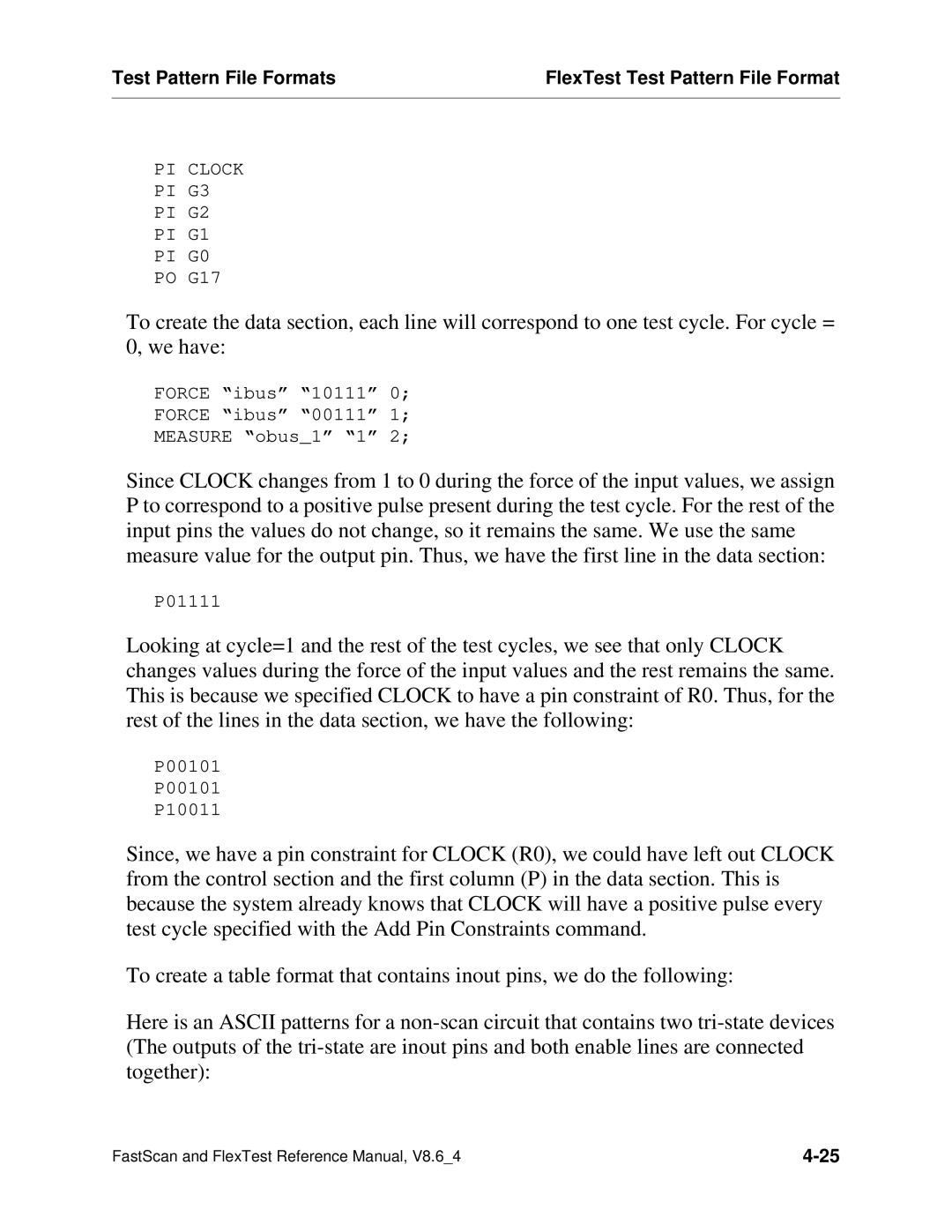Test Pattern File Formats | FlexTest Test Pattern File Format |
|
|
PI CLOCK
PI G3
PI G2
PI G1
PI G0
PO G17
To create the data section, each line will correspond to one test cycle. For cycle = 0, we have:
FORCE “ibus” “10111” 0;
FORCE “ibus” “00111” 1;
MEASURE “obus_1” “1” 2;
Since CLOCK changes from 1 to 0 during the force of the input values, we assign P to correspond to a positive pulse present during the test cycle. For the rest of the input pins the values do not change, so it remains the same. We use the same measure value for the output pin. Thus, we have the first line in the data section:
P01111
Looking at cycle=1 and the rest of the test cycles, we see that only CLOCK changes values during the force of the input values and the rest remains the same. This is because we specified CLOCK to have a pin constraint of R0. Thus, for the rest of the lines in the data section, we have the following:
P00101
P00101
P10011
Since, we have a pin constraint for CLOCK (R0), we could have left out CLOCK from the control section and the first column (P) in the data section. This is because the system already knows that CLOCK will have a positive pulse every test cycle specified with the Add Pin Constraints command.
To create a table format that contains inout pins, we do the following:
Here is an ASCII patterns for a
FastScan and FlexTest Reference Manual, V8.6_4 |
